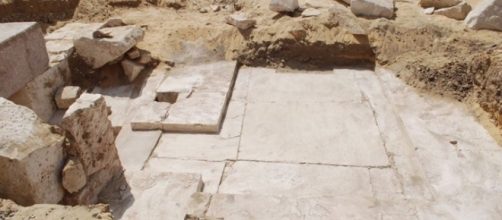The remains of a new Pyramid that is believed to be around 3,700 years old was discovered in Egypt by an Egyptian excavation team. This finding is just the latest in a flurry of news that has come out of the country recently regarding Ancient finds. First a massive statue that was thought to be of Ramses II (c.1303-1213 BC) was found, although now researchers are very certain that it is mostly likely Pharaoh Psamtek I (?-610 BC) instead. Then, it was announced that the United States received $50 million in artifacts from Egypt. Finally, an unopened 4,000 year old tomb was discovered in Qubbet el-Hawa.
Where and what is this new pyramid?
As mentioned before the pyramid is estimated to be 3,700 years old and dates back to the 13th Dynasty of Egypt (c.1803-1649 BC). This new pyramid was found south of the Egyptian capital of Cairo in the Dahshur royal necropolis. It is also located just north of the Bent Pyramid (c. 2600 BC), which is also located in Dasher and was built by Pharaoh Sneferu.
The sides of this new pyramid have a bent slope, which has many researchers speculating that it could have been ancient Egypt's first attempt to build a smooth-sided pyramid in the transition from using steep-sided ones. The remains that were found are the inner structure of the pyramid, including its corridor and an engraved block with ten vertical hieroglyphic lines on it.
There were also stone blocks and a lintel of granite found that showed what the interior designs of the pyramid looked like. The excavation of this new pyramid is now underway to study it and determine its size.
Egypt, the land of ancient secrets
As mentioned in the introduction, Egypt is still a hotbed of new activity and discoveries even after all of these centuries. As the home of one of the oldest civilizations on Earth, Egypt is a wealth of knowledge and is best known for its 123 ancient pyramids that were built over centuries. With each new find researchers are about to learn more about the ancient Egyptians and their various facets of life and technology.

